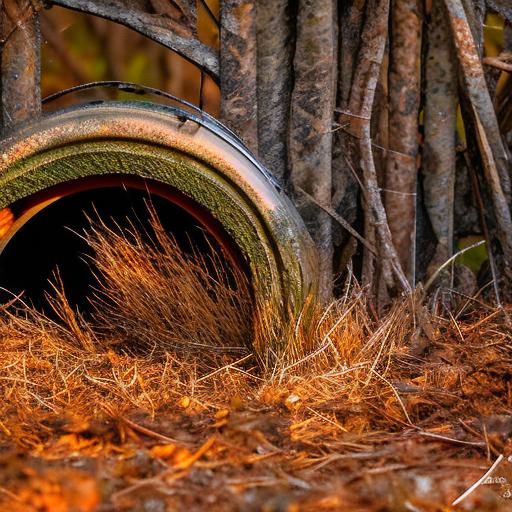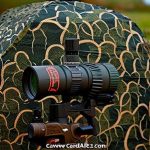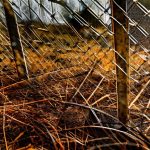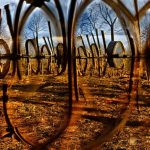Your cart is currently empty!

pit blind for deer hunting

Deer hunting is a popular sport enjoyed by many outdoor enthusiasts. One method that has gained popularity among hunters is the use of pit blinds. A pit blind is a concealed structure that allows hunters to hide and observe deer from ground level. It provides increased concealment and decreased visibility, making it an effective tool for successful hunting.
Key Takeaways
- Pit blinds provide a concealed and comfortable hunting spot for deer hunters.
- Advantages of using a pit blind include better concealment, reduced scent, and improved accuracy.
- Types of pit blinds include permanent, semi-permanent, and portable options.
- Factors to consider when choosing a pit blind include location, size, and material.
- Building a pit blind requires careful planning, digging, and construction.
Advantages of using a pit blind for deer hunting
One of the main advantages of using a pit blind for deer hunting is the increased concealment it provides. By being at ground level, hunters are able to blend in with their surroundings and remain hidden from the keen eyesight of deer. This allows for a closer and more accurate shot.
Another advantage of using a pit blind is better scent control. Deer have a highly developed sense of smell and can easily detect human scent. By being inside a pit blind, hunters are able to minimize their scent and increase their chances of remaining undetected.
Pit blinds also provide protection from the elements. They offer shelter from rain, wind, and snow, allowing hunters to stay comfortable and focused on their hunt. This is especially beneficial during long hours spent waiting for the perfect shot.
Lastly, using a pit blind can improve accuracy and shot placement. By being at ground level, hunters have a stable shooting platform and can take more precise shots. This increases the chances of a clean kill and reduces the risk of injuring the animal.
Types of pit blinds for deer hunting
There are several types of pit blinds available for deer hunting, each with its own advantages and disadvantages.
Above-ground pit blinds are constructed above the ground and provide an elevated view of the surrounding area. They are typically made of wood or metal and can be permanent or portable. These blinds offer good visibility and are ideal for open fields or areas with limited cover.
In-ground pit blinds are dug into the ground and provide a more concealed and natural-looking option. They are typically made of wood or concrete and can be covered with vegetation to blend in with the surroundings. In-ground pit blinds are best suited for areas with dense vegetation or thick cover.
Portable pit blinds are lightweight and easy to transport. They are typically made of fabric or synthetic materials and can be set up quickly and easily. Portable pit blinds are a versatile option that can be used in various hunting locations.
Factors to consider when choosing a pit blind for deer hunting
When choosing a pit blind for deer hunting, there are several factors to consider.
Location and terrain play a crucial role in determining the type of pit blind to use. Consider the vegetation, topography, and visibility of the area. Above-ground pit blinds are better suited for open fields, while in-ground pit blinds are ideal for areas with dense cover.
Size and capacity are important considerations as well. Determine how many hunters will be using the blind and ensure that there is enough space for everyone to comfortably sit or stand. Additionally, consider the height of the blind to ensure that it provides adequate visibility.
Material and durability are also important factors to consider. Choose a pit blind that is made of sturdy materials that can withstand the elements and regular use. Consider the weight of the blind as well, especially if it needs to be transported to different hunting locations.
Cost and budget should also be taken into account. Pit blinds can range in price depending on their size, material, and features. Set a budget and choose a blind that fits within your price range while still meeting your needs.
Building a pit blind for deer hunting: step-by-step guide
Building a pit blind for deer hunting can be a rewarding project that allows you to customize your hunting experience. Here is a step-by-step guide to building your own pit blind:
1. Materials needed: Determine the size and design of your pit blind and gather the necessary materials. This may include wood, nails, screws, concrete, camouflage netting, and vegetation for cover.
2. Site selection and preparation: Choose a location for your pit blind that offers good visibility and is near deer activity. Clear the area of any debris or vegetation that may obstruct your view.
3. Construction process: Start by digging a hole that is deep enough to accommodate the height of your blind. Build the frame of the blind using the chosen materials, ensuring that it is sturdy and secure. Add any additional features such as windows or shooting ports.
4. Cover and camouflage: Once the frame is complete, cover the blind with camouflage netting or vegetation to blend in with the surroundings. This will help to further conceal your presence.
5. Tips for a successful build: Ensure that the blind is level and stable to prevent any accidents or injuries. Consider adding a roof or overhead cover to provide protection from rain or snow. Test the blind for visibility and make any necessary adjustments before using it for hunting.
Tips for successful deer hunting in a pit blind
Using a pit blind for deer hunting requires careful planning and execution. Here are some tips to increase your chances of success:
Proper scent control is crucial when hunting from a pit blind. Deer have a highly developed sense of smell and can easily detect human scent. Use scent control products such as scent-free soaps and sprays, and avoid wearing clothing with strong odors.
Camouflage and concealment are key to remaining hidden from deer. Use natural camouflage patterns that match the surrounding vegetation. Avoid making sudden movements or noise that could alert deer to your presence.
Patience and stillness are essential when hunting from a pit blind. Deer have excellent hearing and can detect even the slightest movement or noise. Remain quiet and still, and wait for the perfect shot opportunity.
Shot placement and accuracy are important factors in ensuring a clean kill. Practice shooting from your pit blind to become familiar with the shooting angles and distances. Aim for vital organs such as the heart or lungs for a quick and humane kill.
Safety precautions to take when using a pit blind for deer hunting
Safety should always be a top priority when using a pit blind for deer hunting. Here are some important safety precautions to take:
Proper firearm handling and storage is essential to prevent accidents. Always treat firearms as if they are loaded, and never point them at anything you do not intend to shoot. Store firearms securely when not in use.
Awareness of surroundings and other hunters is crucial to prevent accidents. Be aware of the location of other hunters in the area and communicate with them to avoid any potential conflicts or accidents.
Use of safety harnesses and equipment is recommended when hunting from an elevated pit blind. This will prevent falls or injuries in case of a mishap.
Proper ventilation and air flow are important considerations when using a pit blind. Ensure that there is adequate ventilation to prevent carbon monoxide buildup, especially if using a portable gas heater.
Maintenance and upkeep of a pit blind for deer hunting
Regular maintenance and upkeep of your pit blind are important to ensure its longevity and effectiveness. Here are some tips for maintaining your pit blind:
Cleaning and sanitizing the blind regularly will help prevent the buildup of dirt, debris, and odors. Use mild soap and water to clean the blind, and allow it to dry thoroughly before storing it.
Repairs and replacements may be necessary over time. Inspect the blind regularly for any signs of damage or wear, and make repairs as needed. Replace any worn-out or broken parts to ensure the blind remains safe and functional.
Storage and winterization should be done at the end of the hunting season. Clean the blind thoroughly, remove any vegetation or coverings, and store it in a dry and secure location. Consider applying a protective coating or sealant to prevent damage from moisture or pests.
Alternatives to pit blinds for deer hunting
While pit blinds offer many advantages, they may not be suitable for every hunting situation. Here are some alternatives to consider:
Tree stands are elevated platforms that allow hunters to have a better vantage point. They provide increased visibility and can be effective in areas with tall vegetation or dense cover.
Ground blinds are portable structures that can be set up quickly and easily. They provide concealment and can be used in various hunting locations. Ground blinds are a versatile option that can be used in both open fields and areas with dense cover.
Stalking and still-hunting involve moving quietly and slowly through the hunting area to locate deer. This method requires patience, stealth, and knowledge of deer behavior. It can be effective in areas with limited cover or when hunting in challenging terrain.
Is a pit blind the right choice for your deer hunting needs?
In conclusion, pit blinds offer many advantages for deer hunting, including increased concealment, better scent control, protection from the elements, and improved accuracy. However, they may not be suitable for every hunting situation. Consider your personal preferences, hunting style, and the specific conditions of your hunting area when deciding whether a pit blind is the right choice for you. Regardless of the method you choose, always prioritize safety and follow local hunting regulations to ensure a successful and ethical hunt.
If you’re an avid deer hunter, you know the importance of having a well-placed blind. It can make all the difference in your success rate. But have you ever considered using a pit blind for deer hunting? This unique approach can provide a whole new level of concealment and increase your chances of a successful hunt. If you’re interested in learning more about pit blinds and how to effectively use them, check out this informative article on Old Oak Syndicate. Happy hunting!
FAQs
What is a pit blind for deer hunting?
A pit blind is a type of hunting blind that is dug into the ground, providing hunters with a concealed location to hunt deer from.
How is a pit blind constructed?
A pit blind is typically constructed by digging a hole in the ground and then building a structure around it using wood, metal, or other materials. The structure is then covered with dirt, leaves, and other natural materials to blend in with the surrounding environment.
What are the advantages of using a pit blind for deer hunting?
The main advantage of using a pit blind for deer hunting is that it provides hunters with a concealed location to hunt from, making it easier to get close to deer without being detected. Additionally, pit blinds can provide protection from the elements and can be more comfortable than other types of hunting blinds.
What are the disadvantages of using a pit blind for deer hunting?
The main disadvantage of using a pit blind for deer hunting is that it requires a significant amount of time and effort to construct. Additionally, pit blinds can be difficult to access and may not be suitable for all hunting locations.
What should I consider when building a pit blind for deer hunting?
When building a pit blind for deer hunting, it is important to consider factors such as the location of the blind, the materials used to construct it, and the size and shape of the blind. Additionally, hunters should consider factors such as camouflage and scent control to avoid detection by deer.

Herb has been a longtime lover of the outdoors. Whether it be hunting, camping, fishing or just getting outside to reset. Proud father and animal lover. Bourbon anyone?

by
Tags:
Comments

Categories
- Big Game Hunting (301)
- Deer (202)
- Reviews (3)
- Shooting (16)
- Slingshot (1)
- Small Game Hunting (42)
- Upland Hunting (126)
- Waterfowl Hunting (3)





Leave a Reply